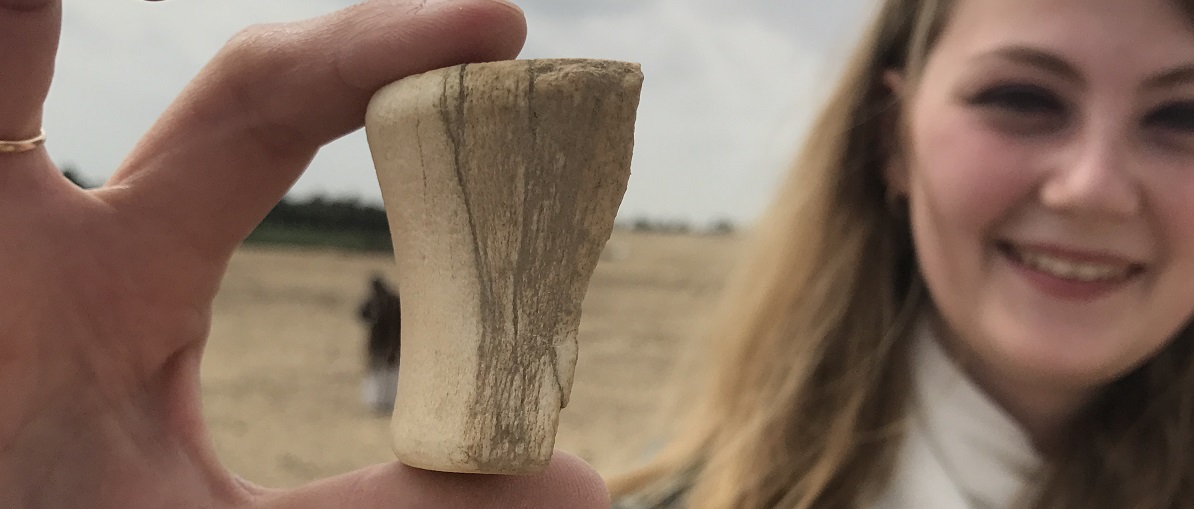Week 7: 18-24 February 2018
Week seven was the second to last week of the program. On Sunday we had an excursion to Kahun, Lahun, and Meidum in the Faiyum. First we all went to Lahun where the pyramid of Senusret II dominates the landscape. The outer casing of the pyramid that was made of limestone is completely gone, which is why you can only see the inner part of the pyramid made out of mudbrick. We walked around the pyramid, and saw the remains of a queen’s pyramid and several mastabas hacked out in the natural rock formation. The shafts of the mastabas are located outside the mastaba next to the superstructure. Then as a group we set out to investigate the mudbrick wall that surrounds the entire pyramid complex. We have seen so much of them already during this program that I think everybody has come to love them. Then we walked on to the south side of the pyramid where the burials of the princesses are located. It is in these tombs that the jewellery we saw last week in the NMEC was found.
Afterwards we went to Kahun, the village of the pyramid builders of Senusret II. As an Egyptology student you are used to looking at the map Petrie drew of this site. The map shows clear ground plans of the houses, and the lay-out of part of the village. However, being at the site you can see nothing of the foundations that Petrie drew on his map, as the whole site is covered with sand. Even so there was still a lot to see at the site, for example the ground was literally littered with potsherds, and other objects that could be seen on the surface. As real archaeologists we did a surface survey of the site, and scoured the ground. Some of us spotted tools, vases, and architectural elements that were once part of the houses in the village. We did this until we reached the gate of the village where the car picked us up so we could drive to our next stop.

Our next stop was Meidum, and we were immediately greeted by the pyramid of Snefru, and a dog with her tiny white pup, who had floppy ears. In the shadow of the pyramid we had lunch, while also enjoying the sun. Our next mission was to descend into the Meidum pyramid that in my opinion was not as difficult in comparison to the other pyramids we had already conquered. First we had to descend using a corridor that leads to a small room with wooden stairs. The stairs leads up into the burial chamber, which is quite small.
After the pyramid we went to Mastaba 17 right next to the pyramid. Marleen told us that even though this is the second biggest mastaba on site, the name of its owner is unfortunately not known. We all got the chance to go into this mastaba using a robber’s tunnel dug in ancient times, which was very narrow and in which we needed to crouch, or crawl like an army soldier. Because I am not very fond of bats I did not go into the burial chamber at the bottom of the shaft. Together with Sophie I waited outside for the others to come out. When they came out they were covered with a lot of dust. They told us that they saw the sarcophagus that was still in the burial chamber, and that bats were peacefully sleeping hanging from the ceiling. Next we went to the Mastaba of Nefermaat and Itet, which lay further away from the pyramid. It is this mastaba from which the images inlaid with coloured paste originate. Also the Meidum geese came from here, and were originally from the chapel of the wife of Nefermaat, Itet.

On Tuesday most of us went the German Archaeological Institute in order to work on our papers. In the afternoon we had a seminar by Virág Pabeschitz, who enlightened us about archaeological practice and field work. She moreover told us about her own excavation at Heit el-Ghurab, the village of the pyramid builders at Giza.
On Wednesday we had another day of self-study at the German Archaeological Institute, followed in the afternoon by a seminar by Anna Stevens who told us about her excavations at Amarna. She mainly excavates the cemeteries and tries to place them in the bigger context of the whole city.
On Thursday evening we went to the lecture by Isolde Lehnert, who is the librarian of the German Archaeological Institute. She spoke about Max Meyerhof, a German eye doctor in Egypt, who opened a clinic in Egypt in the first half of the 20th century, and became an important figure within Egypt.
Saturday was a scary day for some of us, because this was the day of the fifth annual GARDEN conference (Graduate Annual Research Discussions on Egypt and Nubia). During this conference students get the chance to speak about and explain their ongoing research. It was a very diverse group of speakers from different universities in Egypt and Europe.
Emmely Koornstra


